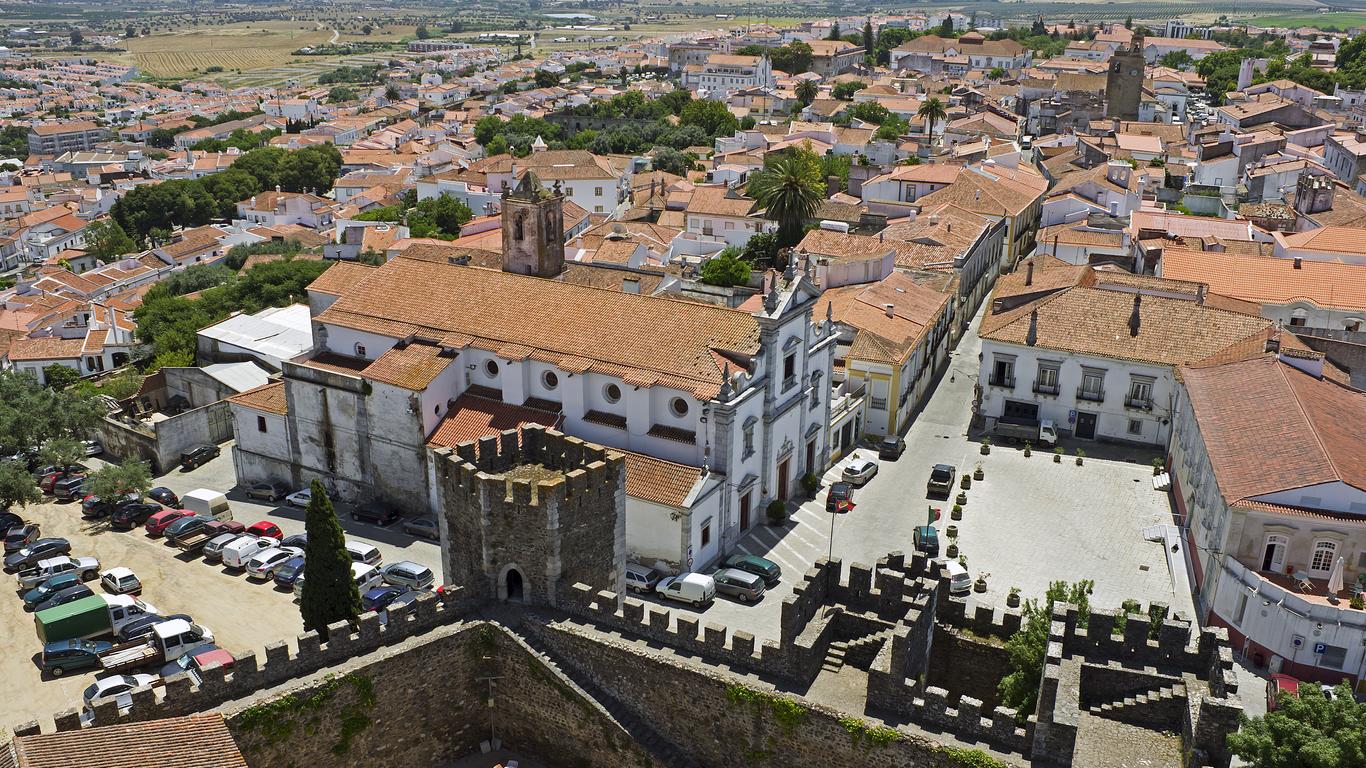Perched atop a hill overlooking the Baixo Alentejo, Beja is a historically rich city in Portugal’s south. It was inhabited by the Celts, the Romans and the Visigoths before being taken by the Umayyads in 713. Today, its majestic architecture exhibits Moorish, Manueline and Mannerist-style influences, reflecting its tumultuous centuries under Almohad and Portuguese rule.
Things to do in Beja
Dominating the city centre is the Castle of Beja, which was originally established in the 4th century and was reconstructed in 1253 by King Alfonso III. It is renowned for its 40-metre-high granite and marble keep (the tallest in Portugal), from where you can enjoy sweeping views across the surrounding countryside. Antique weaponry and uniforms are on display in the castle’s military museum.
Adjacent to the castle is the Mannerist-style Cathedral of James the Great, which is richly decorated with gilded carvings, polychrome altarpieces and religious paintings. On the other side of the castle is the Church of Santo Amaro, a whitewashed house of worship established in the 5th century. Today, it houses a small archaeological museum filled with Visigothic artworks.
Occupying the former Convent of Our Lady of the Conception is the Beja Regional Museum, which boasts an impressive array of tombstones, coats of arms and literary works. The building is a destination in itself, with a Flamboyant Gothic portal and Mudejar-style windows. The Beja Regional Museum is accessed via the convent church, which is opulently decorated with carvings and gold leaf.
Getting around Beja
Beja is around two hours’ drive from Lisbon and Humberto Delgado Airport, which has flights to destinations across the globe. Regular trains connect to the Beja railway station and buses travel throughout the city. The centre of Beja can easily be explored on foot.





